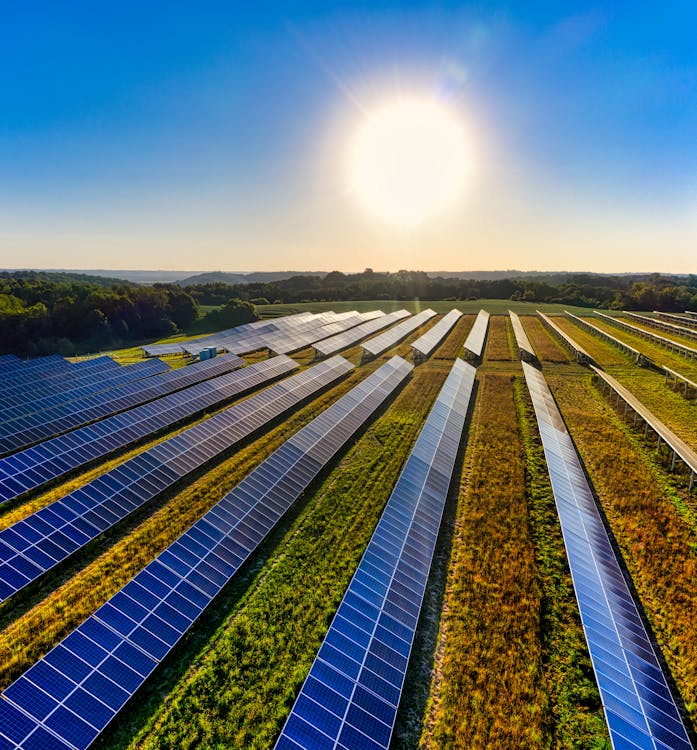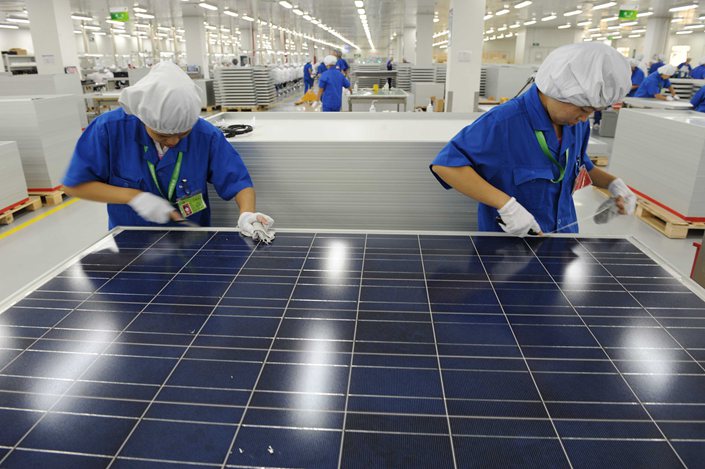The Buzz on Commercial Solar Panels Pa
The Buzz on Commercial Solar Panels Pa
Blog Article
Certified Solar Technicians PA: Our Firm Concentrates On The Installation And Management Of Photovoltaic Energy Systems
History and Advancement of Photovoltaic Panel Business
The creation of photovoltaic panel business can be traced back to the 1800s when Alexandre Edmond Becquerel found the photovoltaic result. Would he have thought of how his discovery would reinvent the way we harness energy?
Early Beginnings

In 1954, Bell Labs developed the very first useful photovoltaic cell. This marked a considerable turning point in the history of solar power. They were initially utilized to power area satellites, but who knew this was simply the start?
Advancement and Growth
- In the 1970s, an energy crisis resulted in increased interest in renewable resource sources, including solar energy.
- By the 1990s, developments in innovation and increasing ecological awareness resulted in the development of photovoltaic panel companies worldwide.
A New Age
As we entered the 21st century, the solar industry experienced an exponential growth. The need for tidy and eco-friendly energy caused a new period in the solar panel industry.
Fascinating Realities
- The world's very first solar power station was integrated in 1982 in Hisperia, California.
- By 2019, solar power had ended up being the world's fastest-growing source of power.
Undoubtedly, the journey of solar panel business has been remarkable, hasn't it? The future holds immense capacity, with constant advancements paving the way for a sustainable future. Can we envision a world powered entirely by solar energy?
Progressing
Today, photovoltaic panel companies continue to innovate, pursuing more effective and cost-effective services. The development of solar power has come a long way, and yet, the journey has actually just check here started.
The Core of Photovoltaic Panel Production
Ever wonder what goes into creating those glossy, sun-loving photovoltaic panels? The procedure is as outstanding as the end product (Solar Panel Installation Pennsylvania). High-purity silicon, the main ingredient in solar panels, goes through various improvements to guarantee its efficiency and sturdiness
From Sand to Silicon
Crystalline silicon, the backbone of many photovoltaic panels, originates from easy sand. It's a remarkable journey, isn't it? The sand goes through a high-temperature response with carbon to form silicon. This isn't just any silicon. The silicon utilized in photovoltaic panels is "solar-grade," with a purity of 99.9999%. It's this purity that makes it possible for the panels to efficiently convert sunlight into power.
Ingot Development
As soon as the silicon is pure enough, it's time to form ingots. Picture a large, cylindrical block of solid silicon. How is this attained? Through a process called Czochralski process, where the silicon is melted and after that gradually recrystallized. It's a slow dance of science, leading to a strong item that is almost as pure as the raw silicon itself.
Slicing into Wafers
The ingots are then sliced into wafer-thin pieces, like slicing a loaf of bread. Each piece is a potential solar cell, waiting to harness the power of the sun. Did you understand that the silicon wafers are just about 200 micrometers thick? That has to do with half the thickness of a human hair! The procedure requires accuracy and patience, however the outcome is a set of wafers ready to be turned into solar batteries.
Creating Solar Battery
With the wafer all set, it's time for the magic to take place. The silicon wafer is 'doped' with other aspects like phosphorous and boron to create an internal electric field. It's this field that allows the conversion of sunlight into electrical energy. Complex, isn't it?
Assembly and Quality Control
Solar battery are like puzzle pieces that come together to form a photovoltaic panel. The cells are soldered together in a grid-like pattern, then covered with a protective layer of glass. The final action includes strenuous quality control checks. After all, it's important that every solar panel carries out at its peak, wouldn't you concur?
Insider Idea
Always remember that even the most optimally made solar panel can lose efficiency due to dirt and particles build-up. Routine cleansing can significantly improve your panels' efficiency.
Understanding the Ecological Effect of Photovoltaic Panel Business
Ever pondered the ecological footprint of a solar panel business? Green innovation, such as solar, has transformed our energy landscape, but what about the behind-the-scenes impact?
The Manufacturing Process: A Double-Edged Sword
The manufacturing process for photovoltaic panels requires a significant amount of energy. This process, called 'em bodied energy', can be considered as a form of 'energy debt'. It's a little like borrowing today's sunlight to power tomorrow's energy requirements. Stress not, the energy repayment time is often much shorter than you 'd think!
- The energy payback period for solar panels is generally 1-4 years.
- After this period, the energy produced is essentially carbon-free.

Life After Decommission
And what takes place when a photovoltaic panel reaches completion of its lifespan? Can it just be tossed into the garbage? No, that wouldn't be very green, now, would it?
A practical service is recycling. While solar panel recycling is still in its infancy, it holds a world of capacity. Recycling not just keeps products out of landfills but likewise reduces the requirement for brand-new basic materials.
Responsible Sourcing: More Than A Buzzword
Where does the silicon originated from, you ask? Regrettably, the industry's need for silicon and unusual minerals can lead to destructive mining practices. Accountable sourcing is for that reason important to reduce hazardous environmental impacts.
Reduced Carbon Emissions: The Larger Photo
Let's not forget the larger image: solar energy significantly decreases carbon emissions. As soon as set up, photovoltaic panels generate tidy, renewable resource, balancing out their preliminary production footprint.
Simply put, the environmental impact of photovoltaic panel business is an intricate problem. With responsible practices, the guarantee of a cleaner, greener future is well within our grasp.
Financial Performance and Market Share of Solar Panel Business
Ever questioned why some solar panel companies - Best Solar Panel Company In PA beat others in the market? What sets them apart? The essential lies in their monetary performance and market share
Financial Efficiency: An Important Sign
Financial efficiency plays a pivotal function in the success of any service. For photovoltaic panel companies, it's no different. Strong financial efficiency enables these business to invest in innovative technology, research, and development, therefore creating high-quality, effective photovoltaic panels.
However how do they attain this? With a concentrate on expense effectiveness and strategic financial investments. Companies that handle to decrease production expenses without jeopardizing on quality tend to fare better in the market.
Market Share: A Measure of Success
Market share, on the other hand, is a direct reflection of a business's popularity amongst customers. A high market share implies more house owners are choosing their solar panels over competitors.
What's the secret dish for gaining a bigger market share? It boils down to customer complete satisfaction and brand reputation. Business that prioritize customer requirements and keep a favorable brand image are more likely to record a bigger share of the marketplace.
- Customer Satisfaction: Photovoltaic panel companies that provide dependable items and exceptional customer support tend to have greater client complete satisfaction rates.
- Brand name Reputation: A strong brand track record is built in time through consistent delivery of quality product or services.
Financial Efficiency and Market Share: The Symbiotic Relationship
Surprisingly, the relationship between monetary performance and market share is not one-sided. They feed off each other. A strong monetary efficiency can increase a company's market share, while a high market share can enhance monetary efficiency.
As a photovoltaic panel company, balancing these two aspects is vital for long-lasting success. A business that overlooks either of them may find it tough to preserve its position in the competitive solar market.
The Takeaway
What does all this mean for you? Whether you're a house owner looking to install photovoltaic panels or a financier considering the solar market, comprehending the monetary performance and market share of photovoltaic panel business is important. They are key signs of a company's health and capacity for future growth.
Report this page